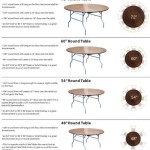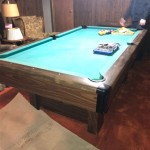How To Varnish A Table And Chairs: A Comprehensive Guide
Varnishing a table and chairs is a worthwhile endeavor that can significantly enhance their appearance, protect them from wear and tear, and extend their lifespan. A well-applied varnish provides a durable, attractive finish that resists scratches, stains, and moisture damage. This article will outline the necessary steps to achieve a professional-looking varnish finish on your furniture, covering preparation, application, and post-application processes. Proper execution of each stage is crucial for optimal results.
Key Point 1: Preparation – Laying the Foundation for a Flawless Finish
The success of any varnishing project hinges on thorough preparation. Rushing this stage can lead to imperfections in the final finish, such as unevenness, trapped dust, or poor adhesion. Preparation includes cleaning, sanding, and addressing any existing damage to the table and chairs.
Cleaning the Furniture: Begin by thoroughly cleaning the table and chairs. Use a mild detergent solution and a soft cloth to remove any dirt, grease, or grime. Pay particular attention to areas that are frequently touched, such as tabletops and chair arms. Rinse the surfaces with clean water and allow them to dry completely. This step is essential for ensuring that the varnish adheres properly to the wood surface.
Sanding the Surfaces: Sanding is a crucial step in preparing the furniture for varnishing. It creates a smooth, even surface and provides a "key" for the varnish to grip onto. Start with a coarser grit sandpaper (e.g., 120-grit) to remove any existing varnish, imperfections, or raised grain. Sand in the direction of the wood grain to avoid scratching. Once the surface is relatively smooth, switch to a finer grit sandpaper (e.g., 220-grit) to refine the surface further. Finally, use an even finer grit sandpaper (e.g., 320-grit or higher) for a final smoothing. After each sanding stage, thoroughly remove sanding dust using a tack cloth or a vacuum with a brush attachment. This prevents the dust from being trapped in the varnish finish.
Addressing Existing Damage: Inspect the table and chairs for any dents, scratches, or chips. Fill any imperfections with wood filler that matches the color of the wood. Allow the wood filler to dry completely according to the manufacturer's instructions. Once dry, sand the filled areas smooth, blending them seamlessly with the surrounding wood surface. For deeper damage, multiple applications of wood filler may be necessary. Remember to sand between each application. This step helps to create a professional, uniform finish.
Masking and Protection: Protect any areas that you do not want to be varnished, such as metal hardware or fabric upholstery, with painter's tape. Use drop cloths to protect the surrounding floor and furniture from varnish spills and drips. Adequate masking and protection will save time and effort in cleaning up later.
Key Point 2: Varnish Application – Achieving a Smooth and Durable Coat
The application of varnish requires patience, attention to detail, and the use of appropriate tools. The goal is to apply a thin, even coat of varnish that dries smoothly and provides adequate protection. Choosing the right type of varnish and application method is crucial for achieving the desired result.
Choosing the Right Varnish: There are several types of varnish available, each with its own properties and advantages. Oil-based varnishes offer excellent durability and a warm, amber hue. Water-based varnishes are low-odor, dry quickly, and are environmentally friendly. Polyurethane varnishes are highly durable and resistant to scratches and chemicals. Select a varnish that suits the intended use of the table and chairs, as well as your personal preferences. Consider factors such as durability, drying time, and appearance. Read the manufacturer's instructions carefully before use.
Selecting Application Tools: Varnish can be applied using a brush, roller, or spray gun. A high-quality brush with natural bristles is recommended for applying varnish to detailed areas or for achieving a traditional look. A foam roller can be used for applying varnish to large, flat surfaces, such as tabletops. A spray gun provides the most even and consistent finish, but requires more skill and equipment. Regardless of the application method chosen, ensure that the tools are clean and in good condition.
Applying the Varnish: Before applying the varnish, stir it gently to avoid creating bubbles. Do not shake the varnish, as this will introduce air bubbles that can become trapped in the finish. Apply a thin, even coat of varnish, working in the direction of the wood grain. Avoid applying too much varnish at once, as this can lead to drips and runs. Pay attention to edges and corners, ensuring that they are adequately coated. Overlap each stroke slightly to ensure complete coverage. If using a brush, hold it at a slight angle to the surface and use long, smooth strokes. If using a roller, apply even pressure and avoid over-rolling. If using a spray gun, maintain a consistent distance from the surface and overlap each pass by about 50%.
Dealing with Runs and Drips: If any runs or drips occur, address them immediately. Lightly brush out the runs with a clean brush or smooth them out with a lint-free cloth. Allow the varnish to dry completely according to the manufacturer's instructions before applying additional coats.
Number of Coats: Typically, two to three coats of varnish are recommended for adequate protection and durability. Sand lightly between each coat using a fine-grit sandpaper (e.g., 320-grit or higher) to remove any imperfections and create a smooth surface for the next coat. Remove sanding dust thoroughly before applying each coat. The number of coats may vary depending on the type of varnish and the intended use of the furniture.
Key Point 3: Post-Application – Refining and Curing the Finish
Once the varnish has been applied, it is essential to allow it to cure properly and to refine the finish as needed. Curing time varies depending on the type of varnish and environmental conditions. Proper curing ensures that the varnish hardens completely and achieves its maximum durability and appearance.
Drying and Curing: Allow the varnish to dry completely between coats and after the final coat. Follow the manufacturer's instructions for drying times. Drying times may be affected by temperature, humidity, and ventilation. Avoid placing the table and chairs in direct sunlight or in a humid environment during the drying process. Proper ventilation is essential for allowing the varnish to dry and cure properly. Do not use the furniture until the varnish has fully cured, as this can damage the finish.
Final Sanding and Polishing (Optional): After the final coat of varnish has cured, you may choose to sand and polish the surface for an even smoother, more refined finish. Use very fine-grit sandpaper (e.g., 400-grit or higher) with a sanding block or orbital sander to lightly sand the surface. This step is intended to remove any minor imperfections or dust nibs. After sanding, use a polishing compound and a soft cloth to buff the surface to a high sheen. This step is optional but can significantly enhance the appearance of the finish.
Cleaning Up: Clean all application tools immediately after use. Use the appropriate solvent for the type of varnish used (e.g., mineral spirits for oil-based varnishes, water for water-based varnishes). Dispose of used rags and containers properly according to local regulations. Store leftover varnish in a tightly sealed container in a cool, dry place.
Maintenance: To maintain the varnish finish, clean the table and chairs regularly with a soft, damp cloth. Avoid using harsh chemicals or abrasive cleaners, as these can damage the finish. Protect the furniture from excessive moisture and sunlight. Use coasters and placemats to prevent scratches and stains. With proper care, a well-applied varnish finish can provide years of protection and beauty.
By diligently following these steps, one can successfully varnish a table and chairs, ensuring both aesthetic appeal and long-lasting protection. The key lies in meticulous preparation, careful application, and proper post-application procedures. The resulting finish will not only enhance the appearance of the furniture but also significantly extend its lifespan.

How To Varnish Wood With S Wikihow

8 Easy Steps To Refinish An Old Oak Table And Chairs

How To Varnish Wood With S Wikihow

How To Varnish Wood With S Wikihow

Refinish A Wood Dining Table

The Best Way To Paint A Dining Table And Chairs Confessions Of Serial Do It Yourselfer

8 Easy Steps To Refinish An Old Oak Table And Chairs

Old Kitchen Table Makeover Light Grey Stain Beginner Friendly Step By How To

8 Easy Steps To Refinish An Old Oak Table And Chairs

How To Refinish A Dining Table Without Stripping The Original Coat








